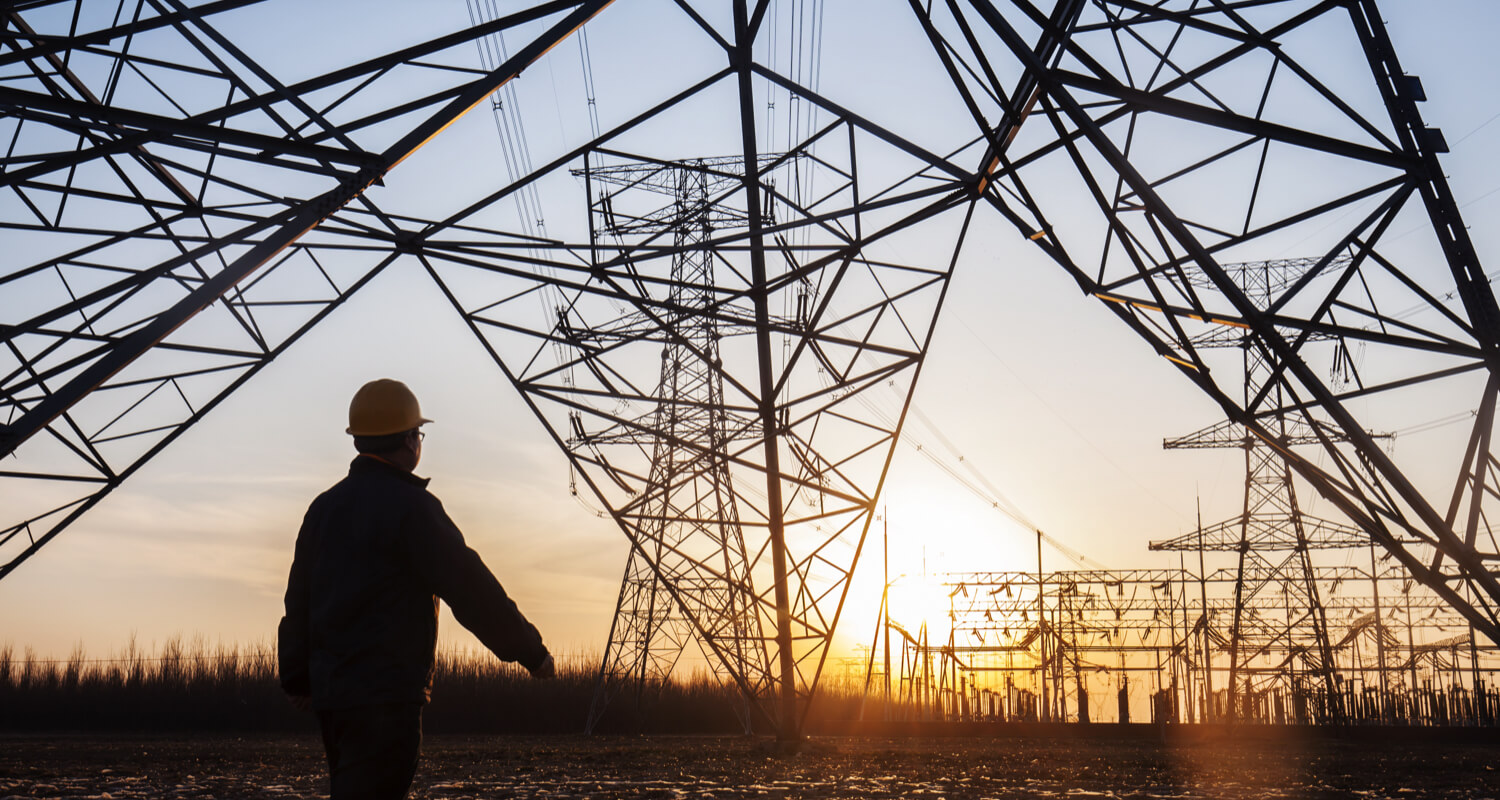The definitive guide to understanding your company’s energy use
31 March 2023
Every month you get energy bills. Be that electricity, natural gas, alternative sources, or a combination of the three, energy is a significant part of your business expenditure. Unfortunately, many of those responsible for utilities consider them as something set in stone and out of control. If that’s true for you too, we have good news to share: you have the power to choose how to buy, use, and green up your energy. Using this power wisely, you can lower your company’s energy expenses, use the energy at the maximum efficiency possible, and take a step closer to a more sustainable future.
Get your PDF version of the Definitive guide to understanding your company’s energy use
Download NowTable of Contents:
- Definitions: your place in the energy market
- Everything you need to know about energy prices
- How to choose the best energy program that meets your business needs
- Factors to consider when choosing a fixed or variable program
- Commercial and industrial energy use
- How to make energy more affordable, efficient, and sustainable for your business:
Definitions: your place in the energy market
Let’s start with identifying where your business stands in the energy market and the roles other market players take.
It all begins with producers–companies that produce the energy you use for your business by using fossil fuels, nuclear, biomass, and other forms of energy. Then, energy suppliers, or retailers, shop for energy on the open market and sell it to you and other consumers, both to use at home and for commercial or industrial purposes. However, you don’t get the energy straight from the supplier because next, there are utilities–companies that transport and deliver the energy to your business.
That’s what usually happens if you skip working with an energy consultant or energy broker, whose place is between suppliers and utilities and who has exclusive partnerships with suppliers, meaning direct access to energy rates and programs that are not available on open markets. Besides, professional energy consultants can help you find and choose the best energy program based on your business needs.
Let’s look at an example. A coffee shop owner, let’s call her Rita, in Edmonton, Alberta, can choose from a list of about 12 licensed retailers, each having its own programs and rates. While the distribution portion of Rita’s energy bills will be significant, she won’t be able to choose a utility company that delivers the electricity because the utility owns the energy infrastructure in the areas it services. So the only part where Rita has the freedom to choose is the supplier, or retailer, part.

What is energy procurement?
Energy procurement is the process of sourcing the power your business needs. In other words, energy procurement is what you do when you sign up for a program with one supplier and pay your utilities monthly. The question here is which supplier to work with, and sometimes choosing from a list of over 10 suppliers can be overwhelming, especially given that you have to make so many other important decisions that will affect your business.
Think about energy procurement for your business as finding the best medical insurance for your family. You need to know how many members you need to cover, what conditions they already have, what might be required in the future, what services you want to have covered, and the list goes on. Although you probably know what exactly you want from your health and dental insurance, you might find it more complicated when it comes to your company’s energy use. That’s why if you want to find an energy solution that meets your specific business needs, for instance, you’re ready to take more risks to pay a lower price, or your business is not risk-tolerant at all, working with an industry expert – a broker – is beneficial.
What is green energy? Why do I need green energy for my company?
The energy your organization consumes daily can come from different sources, such as fossil fuels (oil and natural gas) or solar and wind power. The main two differences between these two types are the pollution caused by energy production and whether the resources used are naturally replenished or not. Green energy is the energy that comes from naturally renewable sources and doesn’t harm the environment by releasing greenhouse gases.
So why should you care about it? First of all, it’s good for the planet. If it’s not enough for you, well, it’s more than enough for your customers. Over the past several years, studies have shown that people do care about the way the goods, such as food, and services they use are produced and delivered. This trend goes far beyond the food we choose and reaches the ways energy is produced and consumed. For example, every year, more and more businesses and individuals take part in Earth Hour and Earth Month activities, so considering green energy for your organization is a step in the right direction.
Besides, green energy is a way to future-proof your business. What’s often looked at as a new, taxing obligation actually offers a ton of opportunities for your company. For example, choosing green energy options lets you:
- Build stronger, trust-based relationships with customers
- Be a part of positive change
- Attract and retain top talent
- See the ROI your business deserves
Check out our article “What Opportunities are Hidden in Green Energy and How You Can Grasp Them” to learn more!
What Opportunities are Hidden in Green Energy and How You Can Grasp Them
Learn MoreEverything you need to know about energy prices
When the energy market is deregulated, meaning it’s not the government who sets the price, prices are determined on an open market, just like stocks. So, with a few law changes, the government gave consumers energy choices. Under this new system, the government regulates utilities and the energy they deliver but opens the door to suppliers who can offer the most competitive rates. This way, consumers like you have a say in the priciest part of their energy bill—the energy supply—and still enjoy the same reliable service. But what about the price?
The price changes every 15 minutes and is driven by factors outside of anybody’s control, like extreme weather, plant closures, and new government regulations. For example, the war in Ukraine led to higher prices for natural gas in Canada and all over the world.
If you want to take a deeper dive into the moving parts that affect energy prices, you should know that there are short-term drivers, like long and cold winters or scorching summers, and fundamental drivers.
A good example of a fundamental driver is the source of energy. For a long time, coal was used as the primary source of energy because it was easy to store, use and transport. Unfortunately, it’s the worst source of energy in terms of its impact on the environment and people’s health. Did you know that in 1952, only 70 years ago, 12,000 people died in London because of smog, the deadly by-product of burning coal? That was an important call, and natural gas started being used more. Now, we’re at the stage of turning to more alternative sources of energy, such as solar and wind power, but the challenge here is how to store and transport such energy effectively.
Those are the factors that affect the energy prices on the open market. When it comes to choosing an energy program for your business, the price will depend on volume, load shape, term of term agreement, start date, and business type. Like with insurance, using a broker’s services can help you find the most beneficial deal on the market.

How to choose the best energy program?
Analyzing the energy usage at your company is the best first step you can take to set yourself up for success.
First, take a look at your energy profile. It would be best if you got as granular as possible in understanding when and how you consume energy. You might be surprised, but it doesn’t only mean looking at your monthly bills and comparing how many kilowatts your properties used. You need to have a breakdown of 15-minute cycles to find out if you can reduce your company’s energy payments because the cost to supply electricity varies minute by minute.
If you look at your commercial energy bill, you’ll notice that it has several major parts: the cost of energy consumed, delivery and distribution charges, and demand charges.
The demand charges are something you might not be familiar with as a residential energy consumer, but since you’re running a business, you should know that they can account for up to 50% of your energy bill.
Here’s how it works: you pay not only for the actual energy you consume (measured in kWh) but also for the energy that needs to be available at any given time to serve your company based on peak load.
It’s also vital to examine your heating profile from both an annual consumption perspective and the highest and lowest energy consumption. Usually, you’ll notice that your facility’s consumption peaks in September and October and reaches its lowest in April and May, depending on where it’s located.
Summing up, the most important thing when signing any type of supply agreement is a good understanding of the program you are signing up for. Here are some questions to ask yourself before making a decision:
-
-
- What is the program swing tolerance?
- What are your exit fees and requirements?
- Is there any type of third-party fees associated with the program?
- How will billing be set up?
- Does the program have an auto-renew policy?
-
Fixed or variable program: how to choose?
You have control over how to buy electricity for your business. This power and freedom also give you additional responsibilities because to make the best decision, you’ll need to take a lot of variables into account:
-
-
- Fixed or variable price. If you chose the variable program, be ready that the market moves up and down so frequently that your business can be caught off guard with utility invoices 20-30% higher than budgeted for.
- The length of the contract. Energy programs can last from 3 to 60 months. The benefit of longer agreements is more security and better budgeting capabilities. Besides, the longer the agreement, the stronger your buying power is. The major risk of long-term contracts is that your company can lose money if you decide to cancel and exit the program before it ends.
- The pricing model. In general, there are load following pricing models, meaning that when you commit to a contract, you commit to a volume your company will consume and block pricing models, that are more affordable and riskier.
-
It’s also important to know if you’re a small or big energy user. Essentially, finding the right energy program is like starting an investment plan, and your choices will be different depending on your needs and risk tolerance. For example, if it’s crucial to minimize, if not eliminate all possible risks, you shouldn’t go for a variable or block pricing plan. Besides, it’s also essential to take the supplier’s reputation into account.
Commercial and industrial energy use
Of course, a huge manufacturing facility and a retirement home will have different energy needs that will be reflected in the ways they consume energy. Let’s look at several examples to understand better what to pay attention to.
First, how is electricity used for businesses? Among the more than 7000 facilities we manage, about 25% use electricity for heating. Other energy-consuming operations are air conditioning, lighting, and running the office space (computers, microwaves, coffee machines, etc.).
If we look at more complex industrial procedures, we’ll find that electricity is used to operate heavy machinery, for irrigation in agriculture, and for big-scale cooling systems.
When it comes to natural gas, it’s mostly used for heating and in commercial spaces; operations, especially in manufacturing, chemical, and food processing industries; and other processes, for example, in water treatment plants. For instance, more than half of the natural gas consumed in Alberta, Canada, is used by the industrial sector.

How to make energy more affordable, efficient, and sustainable for your business
Spend Less
First and foremost, when you start getting more involved in how your business consumes energy, you’ll find opportunities to decrease your energy spending and avoid the risks that every customer in the energy market faces every day. The deregulated market gives you the power to choose your supplier, stop being the victim of the market, and make it work for your business’s success.
To cut energy costs on your own, you need a solid understanding of your company’s energy bills and keep track of the market shifts to get the best deal when it appears. Also, here are some things to keep in mind:
-
-
- Energy is a commodity market where you’re playing a zero-sum game, meaning that if you win, somebody else, usually the supplier, loses. What does it mean for you? In future, that supplier might want to compensate for their loss, or their reputation will suffer.
- If you find a price that is much better than those of competitors, there are probably more risks related to this price. However, a lot depends on the supplier’s reputation and its current position on the market, so make sure you run a kind of a “background check” before signing up for a program.
-
Use Less
When it comes to energy optimization, you should know that the governments in North America are ready to support businesses that want to improve the way they consume energy. There are numerous government initiatives, programs, and grants that you can have access to if you are ready to jump onto the energy optimization journey.
Besides, using less also means better financial planning and forecasting, which are essential to your organization’s growth.
Harm Less
Let’s say you want to green up your energy, but you’re not ready to install solar panels at your facility. What options do you have, and how can you prove that you’re relying on green energy sources? By purchasing carbon offsets and Renewable Energy Certificates (RECs).
How do carbon offsets work?
Carbon offsets are various projects that aim at reducing greenhouse gas (GHG) emissions, increasing carbon storage, or removing GHGs from the atmosphere. There are two carbon offset markets you should know about: compliance and voluntary.
In the compliance market, which reached $261 billion dollars in 2020, companies and governments buy carbon offsets to compensate for the total amount of carbon dioxide they’re allowed to emit.
In the voluntary market, which is expected to be $700 million by 2027, from $305 million in 2020, individuals, organizations, and governments buy carbon offsets to mitigate their own GHG emissions from transportation, electricity use, etc. For example, if you fly a lot, you might want to reduce your carbon footprint by purchasing carbon offsets. Forest restoration and building solar plants are some of the most widely spread types of projects that produce carbon offsets.
How do RECs work?
RECs represent the clean energy attributes of renewable electricity and give you certified proof that you are using renewable energy from the grid without having to install renewable energy systems at your business. With RECs, your business can reduce its carbon footprint with minimum effort and investment.
RECs generally include information about where and when they were generated, and what type of renewable resource they came from. RECs can be bought and sold, so the exchange of RECs is tracked and recorded.
What’s more, by purchasing RECs, you take part in regulating the market by showing that your business is interested in renewable energy.
How can I purchase carbon offsets and RECs?
First, you need to know that buying carbon offsets is a demanding task because it can be challenging to measure carbon offsets’ prices and quality. Such projects have a variety of attributes and co-benefits that are hard to quantify. However, you can follow these three steps to purchase carbon offsets:
-
-
- Choose a project that matches your goals. You can pick forestry or renewable energy project as they are the most common, or go for industrial gases as it’s easy to measure and verify emissions. Keep in mind that large companies, such as Microsoft and Amazon, create portfolios to diversify risks.
- Evaluate project attributes, such as social and environmental potential impact, risk of leakage, etc.
- Check the price. Remember that there is no such thing as a free lunch, and if the price is too low, it should raise questions.
-
With RECs, it’s easier: you can purchase RECs through your electrical utility. Many suppliers offer green power programs, where utilities buy RECs and charge customers a premium for the added cost of around 1 to 2 cents per kWh.
The purchase of both carbon offsets and RECs might seem confusing, and if you don’t want to waste your time and risk ending up committed to something you didn’t plan to commit, working with a trusted energy partner is the best option.
Congratulations! Now you know more about your company’s energy consumption than an average business leader. The most important idea is that although many concepts in the energy industry are complex and might seem overwhelming, you don’t need a Ph.D. to find effective ways to switch to greener energy options and reduce your business’s energy spending. If you want to take it a step further, have a look at our Free Assessment and we’ll help you create a tailored strategy to meet your energy goals!


